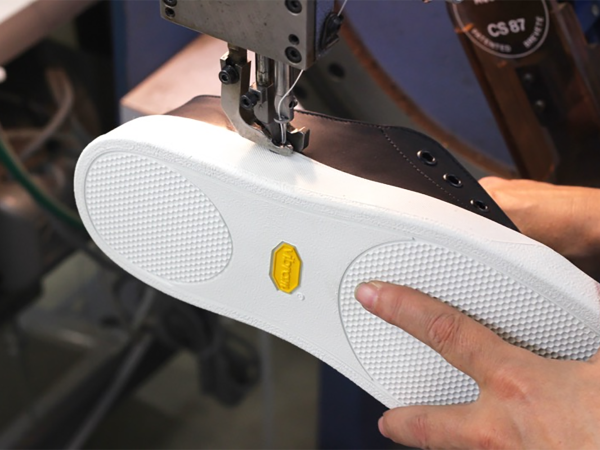When the very first shoe was invented, many, many centuries ago, the outsole was nothing more than a strip of material that had some flexibility to it. It had a string to keep it in its place, and tied to the rest of the shoe. This was an extremely rudimentary design, which was so basic that it was never going to be enough in order to give a person a decent amount of support.
However, this simple and inefficient design has laid the foundations for modern day footwear as we know it today. The outsole is perhaps the most important part of the shoe, since it keeps you standing firmly and gives you traction to the ground you walk on. Outsolves have been steadily improving for centuries, with most of the improvements coming in the past few decades.
These days, there exist numerous kinds of types of outsoles, all of which have a number of unique features that are going to help you out in various situations. Some types of outsoles are well suited for one situation, while other types of outsoles are going to suit a whole ‘nother type of situation.
When you’ve got problems with your foot and are looking for the most comfortable shoes for Morton’s neuroma, or maybe some other foot condition, you’ll run into a number of sole classifications, such as PU sole, MD sole, EVA sole or RB sole. I’m sure you’ve asked yourself what all that stuff even means. Well, so have I. Until one day I decided to investigate and finally figure it out.
Sole Types
PVC Outsoles
Just when you think PVC was for making water pipes, or really fun blow guns for shooting paper arrows out of (and I’ve done that a lot in my younger years, tee hee!). Turns out that PVC is useful for many more purposes than that. PVC stands for polyvinyl chloride. It has really great strength to it, which makes it great for building durable soles. A PVC outsole is a great synthetic alternative to a better known materials such as leather. It’s also pretty cost effective to use for manufacturers.
EVA Outsoles
When you’re shopping for shoes, you see the acronym EVA thrown around a lot. It actually stands for ethylene-vinyl acetate. This material is frequently used for just about every part of a shoe that you can think of. It’s used for manufacturing sock liners, midsoles and outsoles alike. The great thing about EVA is that it offers really great shock absorption qualities.
So is it any wonder that just about every top of the line brand is using EVA in their shoes these days? It’s very flexible, elastic, lightweight, and you can easily color it to match the design of a shoe. Shoes that are going to see intensive usage, are going to really benefit from having an EVA outsole.
TRP Bottoms
TRP stands for thermoplastic rubber. This is a material that was patented in 1975, because it’s such a useful material. It is manufactured by compounding and molding rubber granules, that are acquired from solid raw materials.
Believe it or not, but some manufacturers use shredded car tires in order to create their shoe soles. Rubber will give you lots of slip resistance and it will also absorb shocks really well. However, it’s not the most comfortable material to stand on. So keep that in mind if you’re gonna be standing up for hours with a foot condition such as Morton’s neuroma.
Polyurethane (PU) Bottoms
If you’re going to have a really great, durable sole, that’s also comfortable and at the same time affordable… then a polyurethane outsole is a really great option for you. Soles that are made from PU are very practical and also waterproof. Then there’s the fac that they also absorb shocks very well. All in all, PU outsoles are really great for standing up comfortable for long hours. They are a must for people who have foot conditions, such as plantar fasciitis or Morton’s neuroma.
ABS Outsoles
One relatively new outsole material, is the acrylonitrile butadiene styrene outsole. These new outsoles are gaining more and more traction (pun intended!) because they have a number of highly attractive characteristics. This type of ABS plastic is both durable and tough. It’s also not toxic in the slightest. They will give you excellent performance, while being abrasion resistant, even when they have to endure strong impacts from jumping or jogging.
On the downside, ABS outsoles aren’t very resistant to weather, which makes them a poor choice for outdoor activities. Also, when you are working in hot situations, the high temperatures might cause your ABS outsoles to become deformed.
BPU
This is blocked polyurethane (PU). It’s an improved version of PU. It’s extra tough, extra resilient and it is very resistant to the weather, making it a very suitable outdoor outsole. It will keep you comfortable, especially if you have to stand up for long hours every day with a painful foot condition such as Morton’s neuroma.
[jbio template=”bootbomb0″]



I need a footwear sole producing machine operated 75% manually .or low energy consumption machine.
Thanks
ola anifowose
08037021058
Hi Ola,
I do not have such a machine for you. But I hope you’ll find one!
Sincerely,
Brian